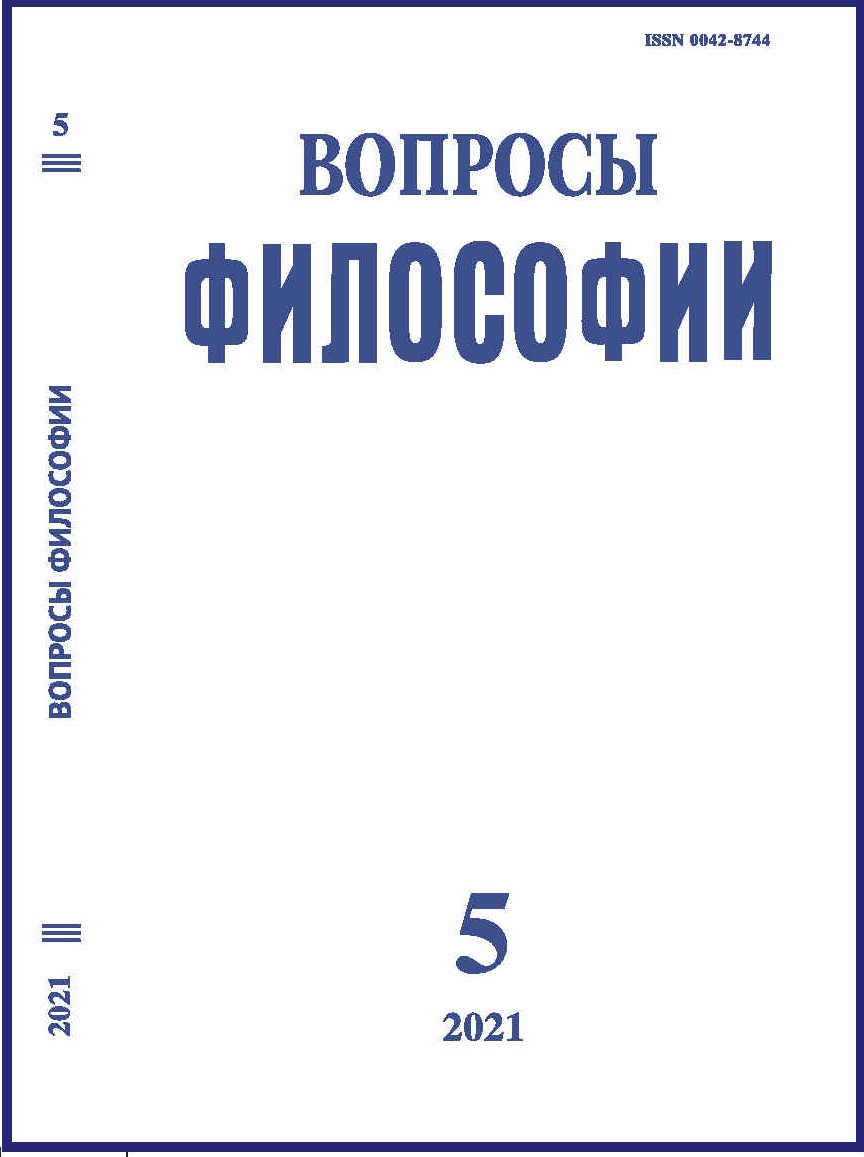The First Interpretations of the Yi-jing in the West and in Russia
DOI:
https://doi.org/10.21146/0042-8744-2021-5-182-198Keywords:
Yi-jing, I-ching, Zhou-yi, Yi-king, Canon of Changes, Book of Changes, G. (Th.) S. Bayer, A.L. Leontiev, N. Baudeau, F. Quesnay, Fu-xi, Seth, He-tu, Dai-Qing hui-dian, Statutes of the Great QingAbstract
The Yi-jing 易經 (Canon of Changes), or Zhou yi 周易 (All-Encompassing Cyclical Changes of the Zhou[era]), is “the book of books” of Chinese culture, which is also claimed to be the primary source of binarynumeration, first described in the West by Leibniz. He was always interested in China, familiar with the binarycode of tri- and hexagrams (gua) of the Yi-jing and acknowledged its mythical creator, the ancestor emperorFuxi, as the discoverer of binary arithmetic, and himself – as the one who found it again after four thousandyears. At present, historical data do not allow us making an accurate conclusion about the dependence orindependence of this outstanding discovery in Europe from the Chinese prototype. The time of the penetrationof the initial information about the Yi-jing into Europe is still hidden by a veil of secrecy. The lack of a messageabout it in the book of Marco Polo is one of its mysteries. At the same time in the Mediterranean area traces ofacquaintance with the Yi-jing studies are visible in such cultural phenomena as astrology and alchemy,Kabbalah and the teachings of Ramon Llull, sextine and hexachord. The beginning of the European study of theYi-jing was laid by Jesuit missionaries who arrived in China at the end of the 16th century. Among them, by theend of the 17th century, a whole trend of “Yi-jingists” or “figuralists” was formed. They saw Yi-jing as theChinese Bible, embodying the original Divine Revelation in the form of the kabbalistic “figures” of the gua andbeing an expression of the common, sacred and antediluvian “hieroglyphic science” of the ancient world, thatis, “Metaphysics of numbers, or general scientific method”, “containing all other knowledge”. Apparently thefirst information in Russia about the Yi-jing was published by the first Russian sinologist, German historian andphilologist-polyglot G. (Th.) S. Bayer in the two-volume Museum Sinicum (Petersburg, 1730) in Latin. InRussian the primary information about Yi-jing became available to the reader half a century later owing to thecoryphaeus of Russian sinology of the 18th century Aleksei L. Leontiev. In 1782 he published an illustrated andcommented translation of a fragment from Yi-jing (named Convenient Base) as an appendix to his translation ofthe Manchu text of the Statutes of the Great Qing (大清會典 Dai-Qing hui-dian). Leontiev mentioned theFrench abbot who visited St. Petersburg in 1769 as the initiator of his appeal to the Yi-jing, but did not indicatehis name. Petr E. Skachkov (1892–1964) agreed with Vsevolod S. Kolokolov (1896–1979) that this abbot wasthe famous French Jesuit missionary and versatile scientist Antoine Gaubil (1689–1759). However, he died tenyears earlier. Most likely the interlocutor of Leontiev was a well-known theologian and economist-physiocrat,French abbot Nicolas Baudeau (1730–1792), who held confidential negotiations with Catherine II in 1769 in St.Petersburg in connection with the situation in Poland. The secrecy of this mission on the eve of the firstpartition of Poland fully explains the concealment of his name in 1782 when he was still alive and preparing thesecond partition of Poland. Apparently, a look at the Yi-jing of the French enlightenerand physiocrats, expressed by F. Quesnay (1694–1774) and reported by Baudeau to Leontiev prompted him tolink the ancient canon with Statutes of the Great Qing. Vasilii P. Vasiliev (1818–1900) expressed a number oforiginal thoughts about the Yi-jing, which may have influenced the creation of his graphic system of Chinesecharacters and Mendeleev periodic table. Yulian K. Shchutsky (1897–1938), the first Russian researcher whospecially studied the Yi-jing and wrote an extensive monograph about it, strangely ignored the statements of hisdomestic predecessors, but his innovative approach anticipated the neo-mystic Jungian tendency in Westerninterpretations of the Canon in the 20th century. Due to the psychologization and aestheticization of the Yi-jingsanctified by world authorities in this field, after the Second World War this neo-mysticism penetrated the massWestern culture which repeated the initial success prepared by figuralists three centuries earlier on a new leveland larger scale.

